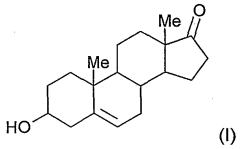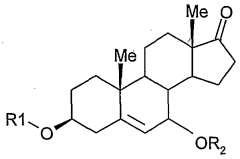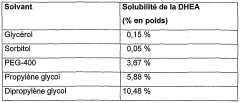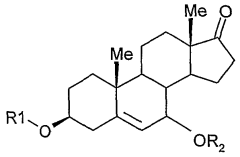How Dipropylene Glycol Affects Cosmetic Formulation Techniques?
JUL 7, 20258 MIN READ
Generate Your Research Report Instantly with AI Agent
Patsnap Eureka helps you evaluate technical feasibility & market potential.
DPG in Cosmetics: Background and Objectives
Dipropylene glycol (DPG) has emerged as a crucial component in modern cosmetic formulations, revolutionizing the industry with its versatile properties and wide-ranging applications. The evolution of DPG in cosmetics can be traced back to the mid-20th century when the demand for multifunctional ingredients in personal care products began to surge. As formulators sought more efficient and effective ways to create stable, long-lasting, and consumer-friendly products, DPG's unique characteristics came to the forefront.
The primary objective of incorporating DPG into cosmetic formulations is to enhance product performance, stability, and sensory attributes. DPG acts as a solvent, humectant, and viscosity modifier, allowing formulators to create products with improved texture, spreadability, and moisture retention properties. Its low toxicity and minimal irritation potential make it an attractive option for a wide range of cosmetic applications, from skincare to hair care products.
The technical evolution of DPG in cosmetics has been driven by the increasing sophistication of formulation techniques and the growing consumer demand for high-performance, multi-benefit products. Initially used primarily as a solvent, DPG's role has expanded to include functions such as fragrance fixation, preservation enhancement, and even as a penetration enhancer for active ingredients. This multifunctionality has made DPG an indispensable tool in the cosmetic formulator's arsenal, enabling the creation of more complex and effective products.
As the cosmetics industry continues to evolve, the use of DPG is expected to grow and diversify further. Current trends in the market, such as the demand for "clean" and sustainable beauty products, are driving research into bio-based alternatives and more environmentally friendly production methods for DPG. Additionally, the increasing focus on personalized skincare and haircare solutions is pushing formulators to explore new ways of leveraging DPG's properties to create tailored products that meet individual consumer needs.
The technical goals for DPG in cosmetic formulations are multifaceted. Researchers and formulators are working to optimize its use in various product types, aiming to maximize its benefits while minimizing any potential drawbacks. This includes improving its compatibility with a wider range of ingredients, enhancing its stability in different formulation environments, and exploring novel applications that can further expand its utility in cosmetic products.
The primary objective of incorporating DPG into cosmetic formulations is to enhance product performance, stability, and sensory attributes. DPG acts as a solvent, humectant, and viscosity modifier, allowing formulators to create products with improved texture, spreadability, and moisture retention properties. Its low toxicity and minimal irritation potential make it an attractive option for a wide range of cosmetic applications, from skincare to hair care products.
The technical evolution of DPG in cosmetics has been driven by the increasing sophistication of formulation techniques and the growing consumer demand for high-performance, multi-benefit products. Initially used primarily as a solvent, DPG's role has expanded to include functions such as fragrance fixation, preservation enhancement, and even as a penetration enhancer for active ingredients. This multifunctionality has made DPG an indispensable tool in the cosmetic formulator's arsenal, enabling the creation of more complex and effective products.
As the cosmetics industry continues to evolve, the use of DPG is expected to grow and diversify further. Current trends in the market, such as the demand for "clean" and sustainable beauty products, are driving research into bio-based alternatives and more environmentally friendly production methods for DPG. Additionally, the increasing focus on personalized skincare and haircare solutions is pushing formulators to explore new ways of leveraging DPG's properties to create tailored products that meet individual consumer needs.
The technical goals for DPG in cosmetic formulations are multifaceted. Researchers and formulators are working to optimize its use in various product types, aiming to maximize its benefits while minimizing any potential drawbacks. This includes improving its compatibility with a wider range of ingredients, enhancing its stability in different formulation environments, and exploring novel applications that can further expand its utility in cosmetic products.
Market Demand Analysis for DPG-based Cosmetics
The market demand for Dipropylene Glycol (DPG) in cosmetic formulations has been steadily increasing due to its versatile properties and wide range of applications. As a humectant and solvent, DPG plays a crucial role in enhancing the performance and stability of various cosmetic products. The global cosmetics industry, valued at over $500 billion, continues to grow, with a compound annual growth rate (CAGR) of around 5% projected over the next five years.
DPG-based cosmetics have gained significant traction in recent years, particularly in skincare and haircare segments. The skincare market, which accounts for the largest share of the cosmetics industry, has seen a surge in demand for products containing DPG due to its moisturizing and skin-conditioning properties. This trend is driven by increasing consumer awareness of the importance of hydration in maintaining healthy skin.
In the haircare sector, DPG is widely used in shampoos, conditioners, and styling products. Its ability to improve product texture and enhance the delivery of active ingredients has led to a growing demand for DPG-based formulations. The haircare market, valued at approximately $90 billion globally, is expected to witness substantial growth in DPG usage over the coming years.
The color cosmetics segment has also embraced DPG-based formulations, particularly in long-wearing and waterproof products. DPG's solvent properties make it an excellent choice for improving the dispersion of pigments and enhancing the overall performance of makeup products. This has resulted in a notable increase in demand for DPG in foundations, mascaras, and lip products.
Regionally, North America and Europe dominate the market for DPG-based cosmetics, owing to their well-established cosmetics industries and high consumer spending on personal care products. However, the Asia-Pacific region is emerging as a key growth driver, with countries like China, Japan, and South Korea experiencing rapid expansion in their cosmetics markets and increasing adoption of DPG-based formulations.
The demand for natural and organic cosmetics has also influenced the market for DPG-based products. While DPG is a synthetic ingredient, its low toxicity and biodegradability have made it acceptable in many natural-inspired formulations. This has opened up new opportunities for DPG in the fast-growing natural cosmetics segment, which is projected to reach a market value of over $20 billion by 2025.
DPG-based cosmetics have gained significant traction in recent years, particularly in skincare and haircare segments. The skincare market, which accounts for the largest share of the cosmetics industry, has seen a surge in demand for products containing DPG due to its moisturizing and skin-conditioning properties. This trend is driven by increasing consumer awareness of the importance of hydration in maintaining healthy skin.
In the haircare sector, DPG is widely used in shampoos, conditioners, and styling products. Its ability to improve product texture and enhance the delivery of active ingredients has led to a growing demand for DPG-based formulations. The haircare market, valued at approximately $90 billion globally, is expected to witness substantial growth in DPG usage over the coming years.
The color cosmetics segment has also embraced DPG-based formulations, particularly in long-wearing and waterproof products. DPG's solvent properties make it an excellent choice for improving the dispersion of pigments and enhancing the overall performance of makeup products. This has resulted in a notable increase in demand for DPG in foundations, mascaras, and lip products.
Regionally, North America and Europe dominate the market for DPG-based cosmetics, owing to their well-established cosmetics industries and high consumer spending on personal care products. However, the Asia-Pacific region is emerging as a key growth driver, with countries like China, Japan, and South Korea experiencing rapid expansion in their cosmetics markets and increasing adoption of DPG-based formulations.
The demand for natural and organic cosmetics has also influenced the market for DPG-based products. While DPG is a synthetic ingredient, its low toxicity and biodegradability have made it acceptable in many natural-inspired formulations. This has opened up new opportunities for DPG in the fast-growing natural cosmetics segment, which is projected to reach a market value of over $20 billion by 2025.
Current State and Challenges in DPG Formulation
Dipropylene glycol (DPG) has become a staple ingredient in cosmetic formulations, offering multifaceted benefits that have revolutionized product development. The current state of DPG formulation techniques is characterized by widespread adoption across various cosmetic categories, including skincare, haircare, and color cosmetics. Its versatility as a solvent, humectant, and viscosity modifier has made it an indispensable component in many formulations.
In skincare products, DPG is extensively used to enhance the solubility of active ingredients, ensuring their even distribution and improved efficacy. It also acts as a moisture-retaining agent, contributing to the development of hydrating creams and lotions. The haircare industry leverages DPG's ability to improve the spreadability of products and its role in creating stable emulsions, particularly in leave-in conditioners and styling products.
Despite its widespread use, formulators face several challenges when incorporating DPG into cosmetic products. One of the primary concerns is achieving the right balance between DPG concentration and product efficacy. While higher concentrations may enhance certain properties, they can also lead to undesirable textures or compromise the stability of the formulation. This delicate balance requires extensive testing and optimization.
Another significant challenge lies in the potential for skin irritation in some individuals, particularly when DPG is used at higher concentrations. Formulators must carefully consider the target audience and conduct thorough safety assessments to mitigate this risk. Additionally, the hygroscopic nature of DPG can sometimes lead to moisture absorption from the environment, potentially affecting the product's shelf life and stability.
The regulatory landscape surrounding DPG usage in cosmetics presents another hurdle for formulators. While generally recognized as safe, there are variations in permissible concentrations across different regions and product types. Staying compliant with these regulations while maintaining product performance is an ongoing challenge for cosmetic companies.
Furthermore, the increasing consumer demand for "clean" and "natural" beauty products has put pressure on formulators to find alternatives to synthetic ingredients like DPG. This trend has spurred research into natural humectants and solvents that can match the performance of DPG without compromising on product efficacy or sensory attributes.
Lastly, the interaction of DPG with other ingredients in complex formulations remains a area of ongoing research and development. Formulators must navigate potential incompatibilities and synergistic effects to create stable, effective products. This requires a deep understanding of ingredient chemistry and formulation techniques, often necessitating extensive experimentation and reformulation efforts.
In skincare products, DPG is extensively used to enhance the solubility of active ingredients, ensuring their even distribution and improved efficacy. It also acts as a moisture-retaining agent, contributing to the development of hydrating creams and lotions. The haircare industry leverages DPG's ability to improve the spreadability of products and its role in creating stable emulsions, particularly in leave-in conditioners and styling products.
Despite its widespread use, formulators face several challenges when incorporating DPG into cosmetic products. One of the primary concerns is achieving the right balance between DPG concentration and product efficacy. While higher concentrations may enhance certain properties, they can also lead to undesirable textures or compromise the stability of the formulation. This delicate balance requires extensive testing and optimization.
Another significant challenge lies in the potential for skin irritation in some individuals, particularly when DPG is used at higher concentrations. Formulators must carefully consider the target audience and conduct thorough safety assessments to mitigate this risk. Additionally, the hygroscopic nature of DPG can sometimes lead to moisture absorption from the environment, potentially affecting the product's shelf life and stability.
The regulatory landscape surrounding DPG usage in cosmetics presents another hurdle for formulators. While generally recognized as safe, there are variations in permissible concentrations across different regions and product types. Staying compliant with these regulations while maintaining product performance is an ongoing challenge for cosmetic companies.
Furthermore, the increasing consumer demand for "clean" and "natural" beauty products has put pressure on formulators to find alternatives to synthetic ingredients like DPG. This trend has spurred research into natural humectants and solvents that can match the performance of DPG without compromising on product efficacy or sensory attributes.
Lastly, the interaction of DPG with other ingredients in complex formulations remains a area of ongoing research and development. Formulators must navigate potential incompatibilities and synergistic effects to create stable, effective products. This requires a deep understanding of ingredient chemistry and formulation techniques, often necessitating extensive experimentation and reformulation efforts.
Existing DPG Formulation Techniques
01 Formulation of personal care products
Dipropylene glycol is commonly used in the formulation of personal care products such as cosmetics, hair care, and skin care items. It acts as a solvent, humectant, and viscosity regulator, improving the texture and stability of the products. The compound helps in dissolving other ingredients and enhances the moisturizing properties of the formulation.- Solvent and carrier applications: Dipropylene glycol is widely used as a solvent and carrier in various formulations. It serves as an effective medium for dissolving and dispersing active ingredients, enhancing the stability and efficacy of the final product. This versatile compound is particularly useful in cosmetics, personal care products, and industrial applications due to its low toxicity and excellent solvency properties.
- Humectant and moisturizing agent: In formulations, dipropylene glycol acts as a humectant and moisturizing agent. It helps to attract and retain moisture, making it valuable in skincare and haircare products. This property also makes it useful in industrial applications where moisture control is crucial, such as in paints, coatings, and adhesives.
- Viscosity modifier and stabilizer: Dipropylene glycol can be used to adjust the viscosity of formulations and improve their stability. It helps to prevent separation of ingredients and maintains the desired consistency of the product over time. This is particularly important in emulsions, suspensions, and other multi-component systems.
- Fragrance and flavor carrier: In the fragrance and flavor industry, dipropylene glycol is commonly used as a carrier for aromatic compounds. It helps to dissolve and disperse fragrances and flavors, ensuring their even distribution throughout the product. This application is particularly important in perfumes, air fresheners, and food additives.
- Preservative enhancer and antimicrobial agent: Dipropylene glycol can enhance the effectiveness of preservatives in formulations and may also exhibit some antimicrobial properties itself. This makes it valuable in products that require extended shelf life or protection against microbial growth. It is often used in combination with other preservatives to create a more robust preservation system.
02 Use in fragrance and perfume compositions
Dipropylene glycol is utilized as a solvent and fixative in fragrance and perfume formulations. It helps to dissolve and blend various fragrance components, enhances the longevity of the scent, and provides a smooth application. The compound's low volatility contributes to the stability of the fragrance mixture.Expand Specific Solutions03 Application in cleaning and detergent formulations
Dipropylene glycol is incorporated into cleaning and detergent formulations as a solvent and coupling agent. It helps to solubilize other ingredients, improve the stability of the mixture, and enhance the cleaning efficiency. The compound also contributes to the viscosity control and foam stabilization of the products.Expand Specific Solutions04 Use in industrial and technical applications
Dipropylene glycol finds applications in various industrial and technical formulations. It is used as a solvent, plasticizer, and intermediate in the production of polyurethanes, resins, and other polymers. The compound also serves as a heat transfer fluid and antifreeze agent in certain industrial processes.Expand Specific Solutions05 Formulation techniques for improved stability and efficacy
Various formulation techniques are employed to optimize the use of dipropylene glycol in different applications. These include emulsification, microencapsulation, and controlled release systems. Such techniques aim to enhance the stability, efficacy, and performance of the final products containing dipropylene glycol.Expand Specific Solutions
Key Players in DPG-based Cosmetic Formulations
The competitive landscape for dipropylene glycol in cosmetic formulation techniques is characterized by a mature market with established players and ongoing innovation. The global cosmetics industry, valued at over $500 billion, is in a growth phase, driven by increasing consumer demand for advanced formulations. Major companies like L'Oréal, Shiseido, and Beiersdorf are investing heavily in research and development to improve product efficacy and sustainability. Technological advancements in formulation techniques have led to increased use of multifunctional ingredients like dipropylene glycol, which offers benefits such as moisture retention and solvent properties. Smaller specialized firms like Plant Advanced Technologies and Gattefossé are also contributing to innovation in this space, focusing on novel extraction methods and natural alternatives.
L'Oréal SA
Technical Solution: L'Oréal has developed advanced formulation techniques incorporating Dipropylene Glycol (DPG) in their cosmetic products. They utilize DPG as a solvent and humectant in various skincare and haircare formulations. L'Oréal's approach involves using DPG to enhance the solubility of active ingredients, improve product texture, and increase moisture retention in the skin [1]. Their research has shown that DPG can help stabilize emulsions and increase the penetration of other beneficial ingredients into the skin [3]. L'Oréal has also explored the use of DPG in combination with other humectants to create synergistic effects, resulting in more effective and long-lasting hydration in their cosmetic formulations [5].
Strengths: Improved ingredient solubility, enhanced product stability, and increased moisture retention. Weaknesses: Potential for skin irritation in sensitive individuals, and the need for careful concentration management to avoid tackiness in formulations.
Beiersdorf AG
Technical Solution: Beiersdorf, the parent company of NIVEA, has integrated Dipropylene Glycol into their cosmetic formulation techniques to enhance product performance. They use DPG as a multifunctional ingredient, serving as a solvent, humectant, and viscosity modifier in their skincare formulations [2]. Beiersdorf's approach focuses on leveraging DPG's ability to improve the spreadability of creams and lotions while maintaining a non-greasy feel. Their research has demonstrated that DPG can help stabilize oil-in-water emulsions, leading to improved product consistency and shelf-life [4]. Additionally, Beiersdorf has explored the use of DPG in combination with other moisturizing agents to create a more effective hydration barrier on the skin [6].
Strengths: Enhanced product texture and spreadability, improved emulsion stability, and effective moisture retention. Weaknesses: Potential for increased product cost due to the use of higher-quality DPG, and the need for careful formulation to avoid over-hydration in oily skin types.
Core Innovations in DPG-based Cosmetic Products
Composition containing a steroid and a glycol
PatentWO2003011244A1
Innovation
- Incorporating dipropylene glycol as a solubilizer for DHEA and its derivatives, which can be mixed at various temperatures to prevent recrystallization and enhance solubility, allowing for stable and effective topical formulations without compromising cosmetic properties.
Oil-in Water type cosmetic composition comprising high level of Dipropylene glycol
PatentActiveKR1020230044827A
Innovation
- A cosmetic composition comprising an aqueous phase with 15% or more dipropylene glycol, combined with specific emulsifiers like glyceryl stearate SE, cetearyl olivate, sorbitan olivate, cetearyl alcohol, and cetearyl glucoside, and a thickener such as ammonium acryloyl dimethyl taurate/VP copolymer, along with optional silicone oil, to enhance moisturizing power and stability.
Regulatory Framework for DPG in Cosmetics
The regulatory framework for Dipropylene Glycol (DPG) in cosmetics is a critical aspect of its use in formulation techniques. In the United States, the Food and Drug Administration (FDA) oversees the regulation of cosmetic products and their ingredients. DPG is generally recognized as safe (GRAS) by the FDA for use in cosmetics and personal care products. However, manufacturers must ensure that their products are safe for consumers and properly labeled.
In the European Union, the use of DPG in cosmetics is regulated by the European Commission's Cosmetic Regulation (EC) No. 1223/2009. This regulation establishes safety standards and restrictions for cosmetic ingredients. DPG is listed in Annex V of the regulation as a permitted preservative in cosmetic products, with a maximum concentration of 1.0% allowed.
The International Nomenclature of Cosmetic Ingredients (INCI) recognizes DPG under the name "Dipropylene Glycol." This standardized naming system is crucial for consistent labeling across different markets and ensures transparency for consumers and regulators alike.
Japan's regulatory framework for cosmetics, governed by the Ministry of Health, Labour and Welfare, also permits the use of DPG in cosmetic formulations. The Japanese Standards of Cosmetic Ingredients (JSCI) lists DPG as an approved ingredient, subject to specific concentration limits and usage guidelines.
In Canada, Health Canada regulates cosmetics under the Food and Drugs Act and the Cosmetic Regulations. DPG is permitted for use in cosmetic products, provided that manufacturers comply with safety and labeling requirements.
The Association of Southeast Asian Nations (ASEAN) has harmonized cosmetic regulations among its member states. The ASEAN Cosmetic Directive includes DPG in its list of permitted ingredients, aligning with international standards while considering regional specificities.
Globally, the Cosmetic Ingredient Review (CIR) Expert Panel, an independent scientific body, has evaluated the safety of DPG for use in cosmetics. Their assessment concluded that DPG is safe as used in cosmetic formulations, providing additional support for its regulatory acceptance worldwide.
Manufacturers must navigate these regulatory frameworks when incorporating DPG into their cosmetic formulations. Compliance with regional and international regulations is essential for market access and consumer safety. As regulations evolve, formulators must stay informed about any changes in the regulatory status of DPG and adjust their formulation techniques accordingly.
In the European Union, the use of DPG in cosmetics is regulated by the European Commission's Cosmetic Regulation (EC) No. 1223/2009. This regulation establishes safety standards and restrictions for cosmetic ingredients. DPG is listed in Annex V of the regulation as a permitted preservative in cosmetic products, with a maximum concentration of 1.0% allowed.
The International Nomenclature of Cosmetic Ingredients (INCI) recognizes DPG under the name "Dipropylene Glycol." This standardized naming system is crucial for consistent labeling across different markets and ensures transparency for consumers and regulators alike.
Japan's regulatory framework for cosmetics, governed by the Ministry of Health, Labour and Welfare, also permits the use of DPG in cosmetic formulations. The Japanese Standards of Cosmetic Ingredients (JSCI) lists DPG as an approved ingredient, subject to specific concentration limits and usage guidelines.
In Canada, Health Canada regulates cosmetics under the Food and Drugs Act and the Cosmetic Regulations. DPG is permitted for use in cosmetic products, provided that manufacturers comply with safety and labeling requirements.
The Association of Southeast Asian Nations (ASEAN) has harmonized cosmetic regulations among its member states. The ASEAN Cosmetic Directive includes DPG in its list of permitted ingredients, aligning with international standards while considering regional specificities.
Globally, the Cosmetic Ingredient Review (CIR) Expert Panel, an independent scientific body, has evaluated the safety of DPG for use in cosmetics. Their assessment concluded that DPG is safe as used in cosmetic formulations, providing additional support for its regulatory acceptance worldwide.
Manufacturers must navigate these regulatory frameworks when incorporating DPG into their cosmetic formulations. Compliance with regional and international regulations is essential for market access and consumer safety. As regulations evolve, formulators must stay informed about any changes in the regulatory status of DPG and adjust their formulation techniques accordingly.
Environmental Impact of DPG in Cosmetics
The environmental impact of Dipropylene Glycol (DPG) in cosmetics is a growing concern as the beauty industry strives for sustainability. DPG, a synthetic organic compound, is widely used in cosmetic formulations as a solvent, humectant, and fragrance carrier. While it offers numerous benefits in product development, its environmental footprint requires careful consideration.
DPG's production process involves petrochemical derivatives, which raises questions about its sustainability. The manufacturing of DPG consumes significant energy and resources, contributing to carbon emissions and potential environmental degradation. However, compared to some alternative ingredients, DPG's production efficiency and stability in formulations may offset some of these concerns.
In terms of biodegradability, DPG demonstrates favorable characteristics. Studies have shown that it can be readily biodegraded in both aerobic and anaerobic conditions, reducing its long-term environmental persistence. This property is particularly important in the context of cosmetic products, which are often washed off and enter wastewater systems.
Water pollution is another aspect to consider when evaluating DPG's environmental impact. While DPG itself is not highly toxic to aquatic life at typical concentrations found in cosmetic runoff, its presence in water bodies can contribute to overall chemical burden. Proper wastewater treatment is crucial to mitigate potential risks to aquatic ecosystems.
The volatility of DPG is relatively low, which means it has limited potential for air pollution. This characteristic makes it a preferable choice over more volatile organic compounds in cosmetic formulations. However, the cumulative effect of DPG emissions from widespread use in consumer products should not be overlooked in comprehensive environmental assessments.
Packaging and disposal of cosmetic products containing DPG also play a role in its environmental impact. The industry's shift towards more sustainable packaging solutions and improved recycling practices can help reduce the overall ecological footprint of DPG-containing products.
As consumers become more environmentally conscious, there is increasing pressure on cosmetic manufacturers to seek greener alternatives. This has led to research into bio-based alternatives to DPG, derived from renewable resources. While these alternatives show promise, their scalability, performance, and overall environmental impact compared to DPG are still under evaluation.
In conclusion, while DPG offers valuable properties in cosmetic formulations, its environmental impact is multifaceted. The cosmetic industry must balance the functional benefits of DPG with its environmental considerations, exploring ways to minimize its ecological footprint through improved production methods, responsible use, and effective waste management strategies.
DPG's production process involves petrochemical derivatives, which raises questions about its sustainability. The manufacturing of DPG consumes significant energy and resources, contributing to carbon emissions and potential environmental degradation. However, compared to some alternative ingredients, DPG's production efficiency and stability in formulations may offset some of these concerns.
In terms of biodegradability, DPG demonstrates favorable characteristics. Studies have shown that it can be readily biodegraded in both aerobic and anaerobic conditions, reducing its long-term environmental persistence. This property is particularly important in the context of cosmetic products, which are often washed off and enter wastewater systems.
Water pollution is another aspect to consider when evaluating DPG's environmental impact. While DPG itself is not highly toxic to aquatic life at typical concentrations found in cosmetic runoff, its presence in water bodies can contribute to overall chemical burden. Proper wastewater treatment is crucial to mitigate potential risks to aquatic ecosystems.
The volatility of DPG is relatively low, which means it has limited potential for air pollution. This characteristic makes it a preferable choice over more volatile organic compounds in cosmetic formulations. However, the cumulative effect of DPG emissions from widespread use in consumer products should not be overlooked in comprehensive environmental assessments.
Packaging and disposal of cosmetic products containing DPG also play a role in its environmental impact. The industry's shift towards more sustainable packaging solutions and improved recycling practices can help reduce the overall ecological footprint of DPG-containing products.
As consumers become more environmentally conscious, there is increasing pressure on cosmetic manufacturers to seek greener alternatives. This has led to research into bio-based alternatives to DPG, derived from renewable resources. While these alternatives show promise, their scalability, performance, and overall environmental impact compared to DPG are still under evaluation.
In conclusion, while DPG offers valuable properties in cosmetic formulations, its environmental impact is multifaceted. The cosmetic industry must balance the functional benefits of DPG with its environmental considerations, exploring ways to minimize its ecological footprint through improved production methods, responsible use, and effective waste management strategies.
Unlock deeper insights with Patsnap Eureka Quick Research — get a full tech report to explore trends and direct your research. Try now!
Generate Your Research Report Instantly with AI Agent
Supercharge your innovation with Patsnap Eureka AI Agent Platform!




